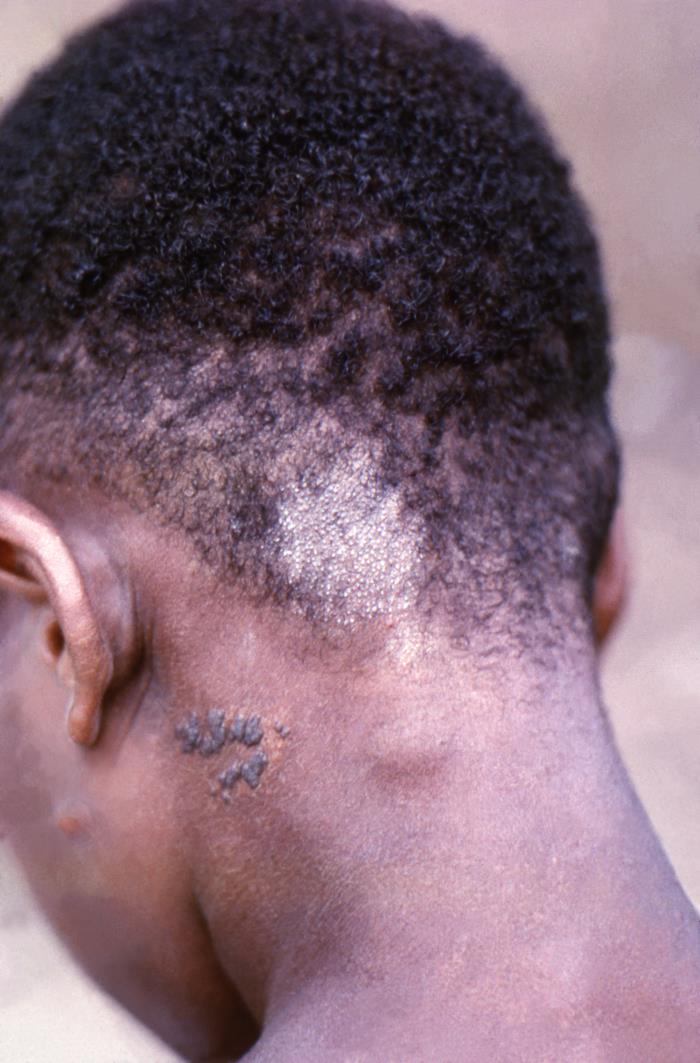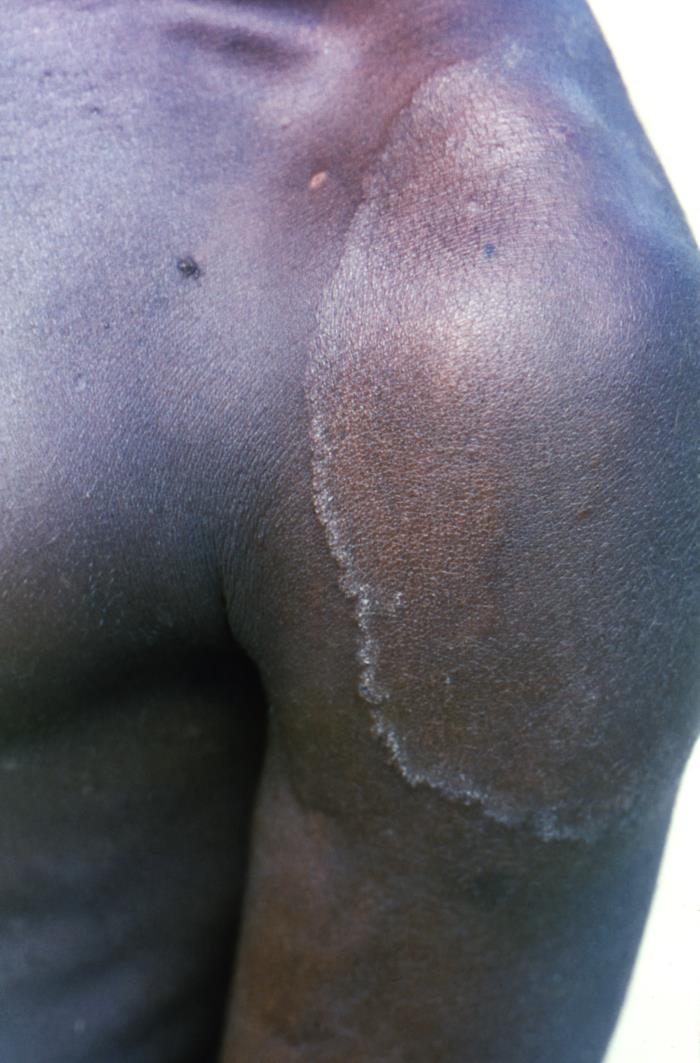At a glance
- Ringworm (tinea) is a common epidermis infection caused by dermatophyte fungi.
- Dermatophytes are also a common cause of onychomycosis (fungal nail infections).
- Ringworm spreads through contact with an infected person, animal, or contaminated surface.
- Diagnostic testing is recommended before prescribing antifungal treatment.
- Antimicrobial-resistant ringworm and onychomycosis are emerging concerns.

Overview
Ringworm, also called tinea, is a common skin infection caused by a group of fungi called dermatophytes. The infection often looks like a circular, scaly rash. Ringworm can appear on different parts of the body including the scalp, feet (athlete's foot), and groin (jock itch). Dermatophytes can also infect nails, leading to a condition known as onychomycosis (fungal nail infection).
Ringworm spreads easily through direct contact with an infected person, animal, or contaminated surface. Since it can be confused with other types of rashes and skin conditions, diagnostic testing is recommended.
Types
The most common species of fungi that cause ringworm are Trichophyton, Microsporum, and Epidermophyton. Ringworm is characterized by the part of the body affected.
Skin infections
Ringworm is often described by the site of the body affected. Examples include:
- Ringworm of the scalp (tinea capitis)
- Ringworm of the groin (tinea cruris or jock itch)
- Ringworm on the feet (tinea pedis or athlete's foot)
Nail infections
Onychomycosis is the term for fungal nail infections. It can be caused by ringworm or by infection with other types of fungi such as yeasts. Onychomycosis can affect the fingernails or toenails, but onychomycosis of the toenails is more common.

How it spreads
Symptoms usually start 4-14 days after exposure. Ringworm also sometimes spreads from one part of the body to another.
Ringworm of the skin is spread through:
- Direct skin contact with people and animals who are infected.
- Sharing personal items (e.g., towels, clothing, bedding).
- Contact with moist surfaces, like shower stall or locker room floors.
Ringworm of the nails usually spreads through a small cut in the skin around the nails. Infections on the foot or between toes are common with nail infections.
Disease rates
It is estimated that up to 25% of people in the world may experience ringworm at some point in their lifetime.
Onychomycosis is estimated to affect around 14% of the general population and is especially common in older adults. People with diabetes are at increased risk for fungal nail infections.
Clinical features

Skin infections
The classic ringworm lesion is an erythematous, raised, scaly ring with central clearing. Lesions typically appear red on light skin and look gray or brown on darker skin Multiple lesions might be present. The severity of ringworm can range from mild, scaly lesions to erythematous, exudative lesions if a bacterial superinfection has developed.
Note: Emerging severe ringworm tends to cause more pronounced infections covering larger areas of the body.
Nail infections
Most cases of onychomycosis are not serious. However, some people may experience pain or be bothered by the appearance of their nails. Onychomycosis may cause nails to become discolored, thick, fragile, or cracked. The nail may also become separated from the nail bed.
People who have fungal toenail infections often have a fungal skin infection on the foot, especially between the toes.
Occasionally, a bacterial infection can occur on top of a fungal nail infection and cause serious illness. This is more common in people with diabetes or other conditions that weaken the immune system.
Testing and diagnosis
Healthcare providers are recommended to test for suspected ringworm and other fungal skin or nail infections to determine best treatment. On examination, ringworm may be difficult to distinguish from other skin conditions, like psoriasis and eczema. There are also many potential causes for fingernail and toenail abnormalities.
Misdiagnoses and incorrect or delayed treatment allows symptoms to progress. In some cases, incorrect treatment can worse the infection. For example, corticosteroid creams can be important for treatment of many skin infections. However, if prescribed based on an inaccurate presumption of another cause of symptoms and applied for ringworm, corticosteroids can exacerbate ringworm.

Antimicrobial stewardship
Antimicrobial-resistant ringworm is emerging and is a current public health concern.
Clinicians can help reduce spread, impact, and new emergences through antimicrobial stewardship. Diagnostic testing, appropriate prescribing, and patient education helps preserve the limited antifungal medication options.
Clinicians should also become familiar emerging ringworm, including some that are antimicrobial-resistant.
